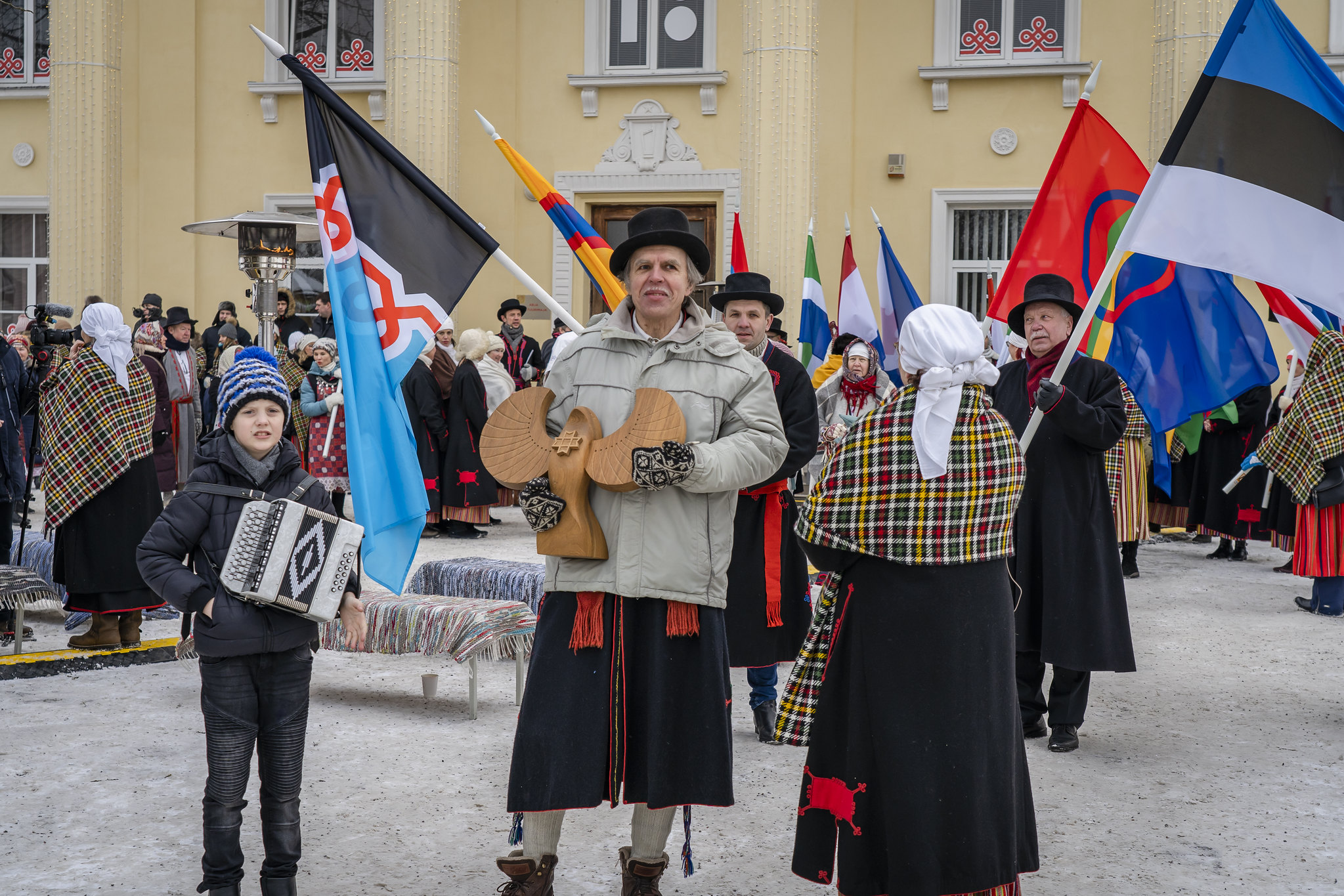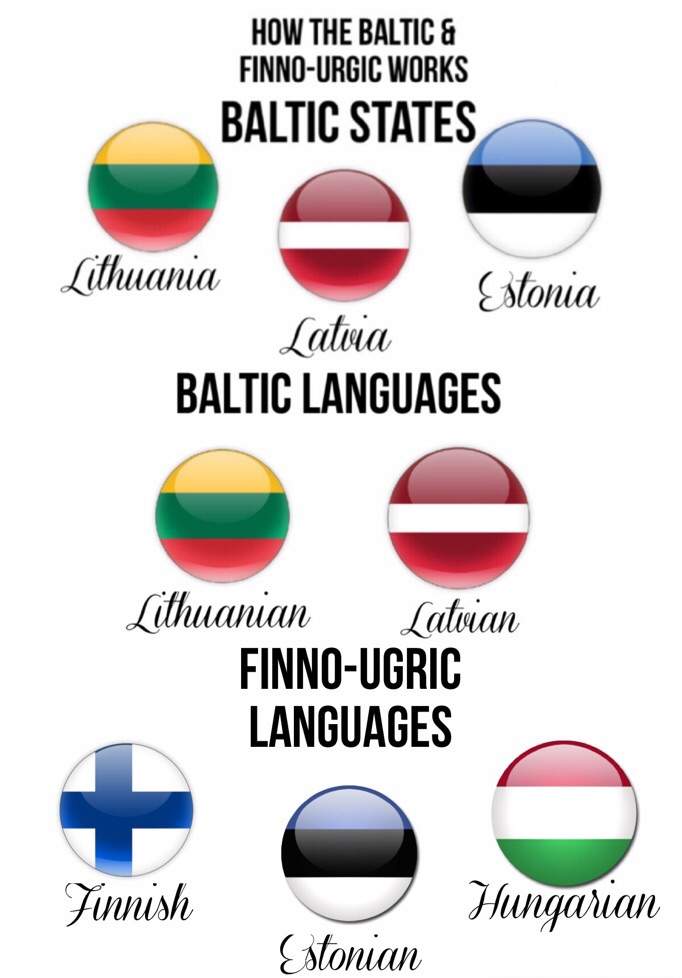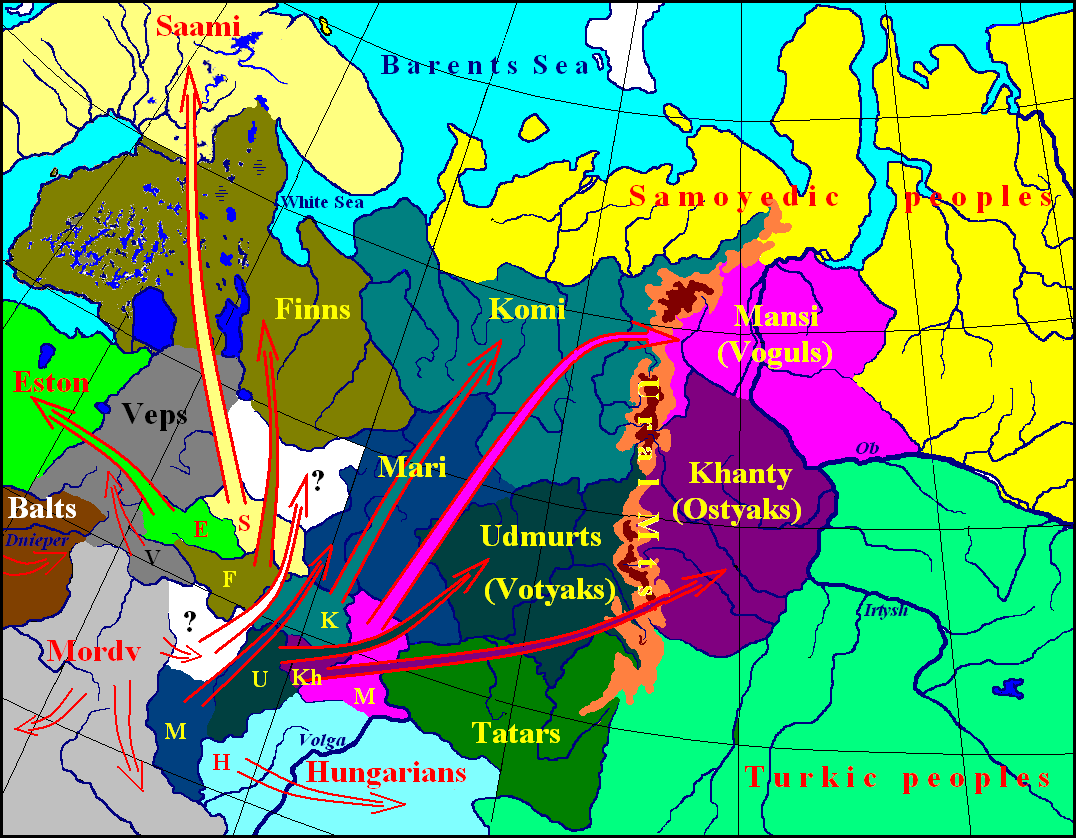
PPT Word order in FinnoUgric languages PowerPoint Presentation, free download ID3431523
The most popular Finno-Ugric languages are Hungarian, Finnish and Estonian.

FinnoUgric languages Wikipedia Language map, Map, History
Finno-Ugric ( / ˌfɪnoʊˈjuːɡrɪk / or / ˌfɪnoʊˈuːɡrɪk /; Fenno-Ugric) [1] or Finno-Ugrian ( Fenno-Ugrian) is a traditional grouping of all languages in the Uralic language family except the Samoyedic languages.

Happy FinnoUgric Day. Saturday 17 October 2020 is celebrated… by Adam Rang Estonian Saunas
The Uralic (Finno-Ugric) languages, the second largest language family in Europe, including three European nation-state languages (Hungarian, Finnish, Estonian) and a number of minority languages in Northern Eurasia, look back to a long history of research.

FinnoUgric Peoples FennoUgria
Finno-Ugric ( / ˌfɪnoʊˈjuːɡrɪk / or / ˌfɪnoʊˈuːɡrɪk /; Fenno-Ugric) [1] or Finno-Ugrian ( Fenno-Ugrian) is a traditional grouping of all languages in the Uralic language family except the Samoyedic languages.

FinnoUgric languages map J. r. r. tolkien
The Finno-Ugric language kinship was proven in the seventeenth century, while cooperation in the sphere of Finno-Ugric linguistics has begun in the nineteenth century. Later, these contacts led to the development of the discipline of Finno-Ugric Studies where linguistics, history, ethnography, and archeology were the key..

Mulgimaa takes centre stage as Estonia embraces its FinnoUgric family
The Research Unit for Volgaic Languages, which operates under Finno-Ugric Languages, co-ordinates our research projects. Hungarian, especially its lexicon, phraseology and language teaching, is also studied at Finno-Ugric Languages. Our themes for research include, for example. Lexicon in the languages of the Volga region.

Baltic & FennoUgric Languages Wiki Languages Amino
The Ob-Ugric languages are spoken in the region of the Ob and Irtysh rivers in central Russia. They had no written tradition or literary language until 1930; since 1937 they have been written in a modified Cyrillic alphabet but have developed no important literature and are little used in government or education. See also Finno-Ugric languages.

Alternative Linguiatics The Expansion of the FinnoUgric Peoples
Finno-Ugrian language studies is a discipline that examines the structure and history of Finno-Ugrian languages, giving consideration to both the methodological starting points developed by general linguistics and the special characteristics of the material and spiritual culture of the peoples that speak these languages.

Digitization project on textual materials of FinnoUgric population groups Minorities Records
The Finno-Ugric languages are a fascinating linguistic group of the Uralic language family that spans across Northern Eurasia. These languages are unique in their own right, with distinctive features and characteristics that set them apart from other language families.

The FinnoUgric languages From the north to the south YouTube
The Finno-Ugric group of languages can be divided into two subgroups, Finnic and Ugric. These languages have about 24 million speakers distributed in enclaves scattered in a territory that stretches from Norway east to the Ob River of Siberia and south to the Carpathian Mts. About 10 million of these people speak the Finnic tongues, which.

Finnougrische Sprachen YouTube
The Ugric division of Finno-Ugric languages is composed of Hungarian and the Ob-Ugric languages Mansi (Vogul) and Khanty (Ostyak). The Finnic division of Finno-Ugric languages is composed of five groups. The Baltic-Finnic group consists of Finnish, Estonian, Karelian (including Olonets), Ludic, Veps, Ingrian, Livonian, and Votic.

Northern Europe with North Germanic and FinnoUgric languages inverted r/imaginarymaps
As the name suggests, the Finno-Ugric family consists of two major branches: Finnic languages and Ugric languages. The former branch includes Finnish, as well as Estonian, Saami, Komi, Mordvin, Udmurt, Mari and several other smaller languages such as Karelian, Votic, Veps and Livonian.

Finnish language 💬🇫🇮 FinnoUgric language tree and unique words YouTube
Loanwords. One argument in favor of the Finno-Ugric grouping has come from loanwords.Several loans from the Indo-European languages are present in most or all of the Finno-Ugric languages, while being absent from Samoyedic. [citation needed]According to Häkkinen (1983) the alleged Proto-Finno-Ugric loanwords are disproportionally well-represented in Hungarian and the Permic languages, and.

FinnoUgric languages Wikiwand
The Volga Finns (sometimes referred to as Eastern Finns) [1] are a historical group of indigenous peoples of Russia living in the vicinity of the Volga, who speak Uralic languages.

Songs And Music Of Finno Ugric Languages YouTube
Finno-Ugric can first be divided into the most distantly related Ugric and Finnic (sometimes called Volga-Finnic) groups, which may have separated as long ago as five millennia. Within these, three relatively closely related groups of languages are found: the Baltic-Finnic, the Permic, and the Ob-Ugric.

FinnoUgric languages comparison (basic words) YouTube
In the extant lists proposing Indo-Iranian exchanges with Finno-Ugric, in all a few hundreds, we can hardly find a handful of attempts (notably Blažek 2005) to claim, let alone prove, an arrow from Finno-Ugric and into Indo-Iranian. Haarmann is aware that hundreds of IE, mainly Iranian words have entered the lexicon of the Uralic languages.